Use your stability ball to get a rock-hard stomach using these easy stability ball ab exercises!
A few weeks ago I talked about some of the benefits of using a stability ball with traditional exercises (see that article here). I mentioned that many times I only ever see people using stability balls to work their abdominals. That was not to take away the benefits that stability balls have on the abdominals, but to get you to think about the many other exercises you can do with them.
Today, I want to give you a few more stability ball ab exercises that only target your midsection and go far beyond the standard crunch. Of course, we will start with the standard crunch because, let’s face it, when executed properly it can be one of the most beneficial exercises to really tone those abs.
Looking for an easy way to get started working out? Grab our FREE Beginners Workout Guide – 3 Weeks To Tighter Abs, Sculpted Arms, And Toned Legs, by clicking here!
Alternate adding 2-3 of these stability ball ab exercises into your daily workout routine to strengthen and tone the abdominals, or complete the entire workout for a serious ab burner.
Stability Ball Crunch
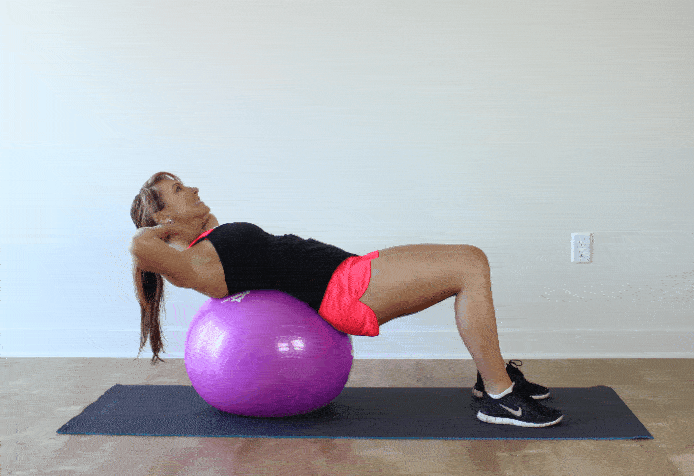
As I mentioned, a basic stability ball crunch can be one of the most beneficial ab exercises using the ball. However, as a trainer, I see so many people performing this exercise incorrectly. This exercise should be performed SLOW and with control. Fast, bouncing, and jerky movements will have no effect and will use momentum instead of muscles to move through each exercise.
To correctly perform this exercise, start by having a seat on the ball. If the ball is the correct size, your thighs should be parallel to the floor. Walk your feet about a foot in front of you so that the ball is in the small of your back. Position your feet hip-distance apart with a 90-degree bend in your knees. Place your hands behind your head, but don’t pull at the neck. Slightly extend your spine over the ball to feel a small stretch in your abs.
To perform the crunch, firmly place your weight in your heels and use your abdominals to curl your torso up a few inches, trying to bring your ribs to your hips and pulling your abs in tight. Extend back over the ball and repeat 15-20 times.
Too many times people “bounce” on the ball, or the ball rolls forward and backward when they do crunches. Unfortunately, this is “cheating” and you won’t get any abdominal benefits from performing them this way. So remember, take your time and know that sometimes smaller movements are more effective than larger movements.
Stability Ball Oblique Crunch
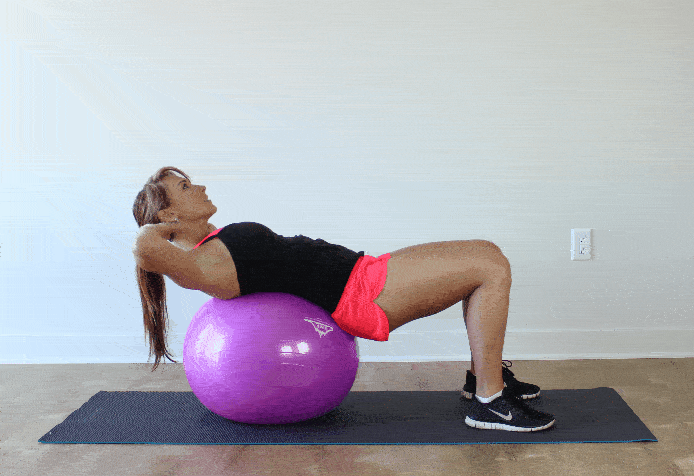
This exercise is very similar to the previous one, only this time the focus is on the obliques. To do this exercise, you will start the same as the basic crunch. As you are ready to “crunch” up you will rotate to engage your RIGHT obliques. As you lift your chest, simultaneously twist your shoulders to the right.
Focus on bringing the LEFT ribs to the RIGHT hip and keeping your feet planted firmly. The ball will slightly move for this exercise, but again, a smaller, slower, and more controlled movement is more beneficial. Complete 10-15 on each side, focusing on one side at a time OR alternating side to side.
Russian Twists on the Stability Ball
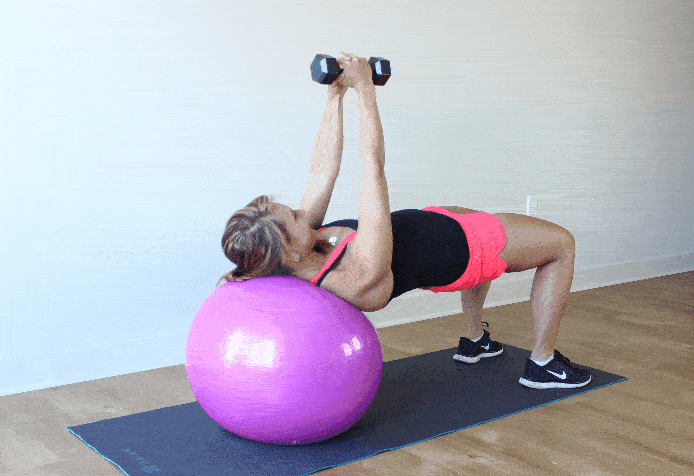
This exercise can be performed with or without a dumbbell, depending on your ability. It focuses on the obliques and twisting from the torso. To get into the correct position, walk your feet a few inches further in front of you so that your shoulder blades, neck, and head are supported on the ball. Your thighs and torso should be parallel to the floor with your glutes engaged.
Clasp your hands together with a 5-10 pound dumbbell in between them if you desire, and your arms straight up to the ceiling. Keep your feet steady as you rotate your torso, shoulders, and your arms to the RIGHT. Engage your LEFT obliques to pull yourself (and the weight) back up to the center. Repeat to the other side engaging the RIGHT side obliques to come back up. Complete 10 repetitions on each side.
Leg Lowers
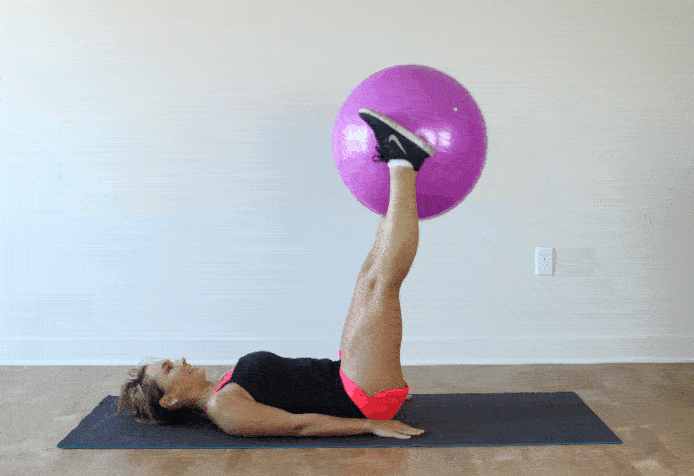
Adding a stability ball to this popular exercise adds just the slightest bit of extra resistance, making the exercise more challenging. Start by laying on your back with your arms by your sides and your spine glued to the mat. Place the ball between your feet and use your inner thighs to slightly squeeze the ball. Extend your legs straight up to the ceiling and engage your abdominals.
Lower your legs, reaching them out away from you, to a point where you feel like you’re just about to lose your abdominal engagement, then pull the ball back up focussing on the lower abdominals. Make sure your never go too low, keep your abs tight the entire time, and your back always glued to the mat. Complete 10 repetitions.
Pendulum
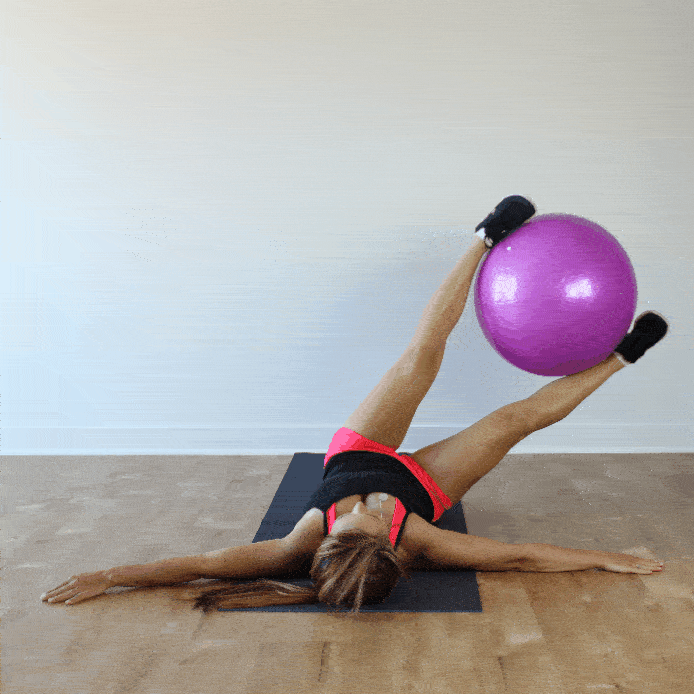
Similar to the exercise above, you will start on your back with your legs straight in the air. This time, open your arms out to the sides into a T position. Keep your abs engaged and your back connected to the mat as you slowing and carefully lower to ball over to the RIGHT, barely lifting your LEFT hip off the ground and keeping your shoulder glued to the floor. Use your LEFT side oblique to bring the ball to center and alternate to the other side. Complete 5 repetitions on each side.
Stability Ball Pass
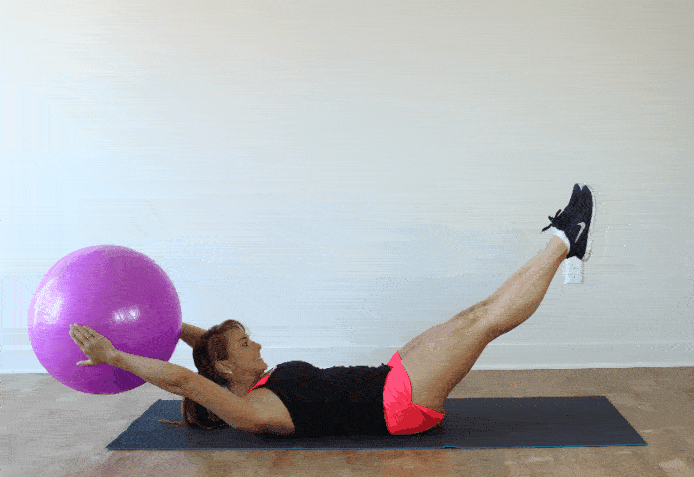
This move combines the best of both worlds with a crunch and leg lowers to really target those upper and lower abs. Start by laying on your back, holding the ball between your feet just as in the leg lowers. Extend your arms overhead and slightly raise up into a small crunch, keeping your back against the mat.
Lower the ball to your point of control and use the lower abs to bring it back up. At the top, pass the ball into your hands in a high crunch. Lower the legs and lower the arms with the ball overhead, so that the ball just hovers over the floor. Crunch back up to pass the ball back to the legs to complete one full repetition. Complete 5-10 repetitions total.

Now that you’re armed with a few new abdominal exercises, you will always have a variety of exercises to do with the stability ball. Just remember, go nice and SLOW, and no bouncing!
(Your Next Workout: 7 Stability Ball Exercises for a Full-Body Workout)


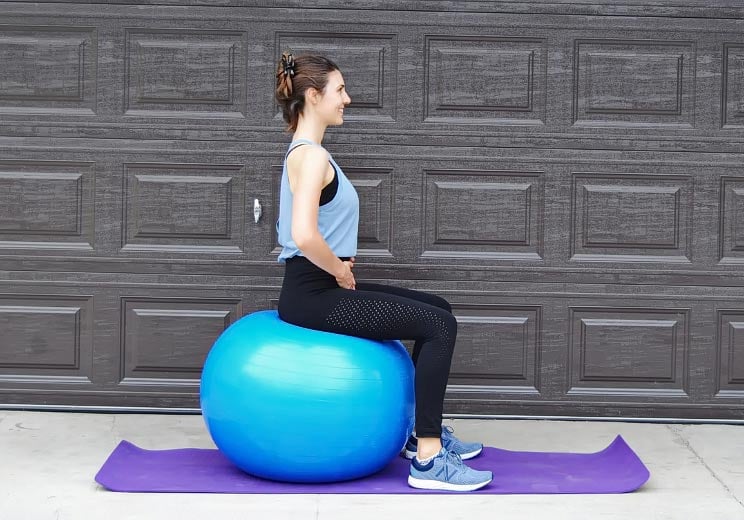
 Spicy Cajun Sweet Potato Mash
Spicy Cajun Sweet Potato Mash
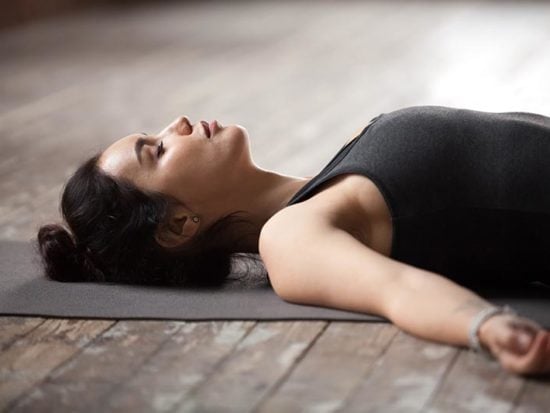

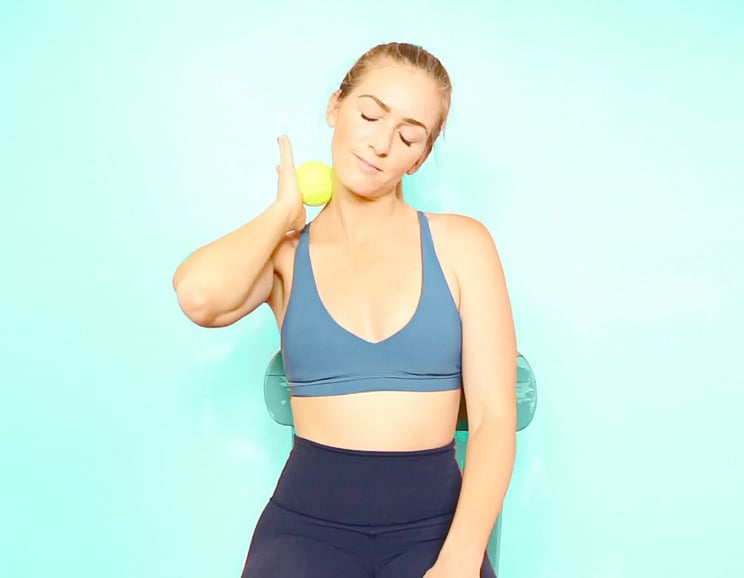
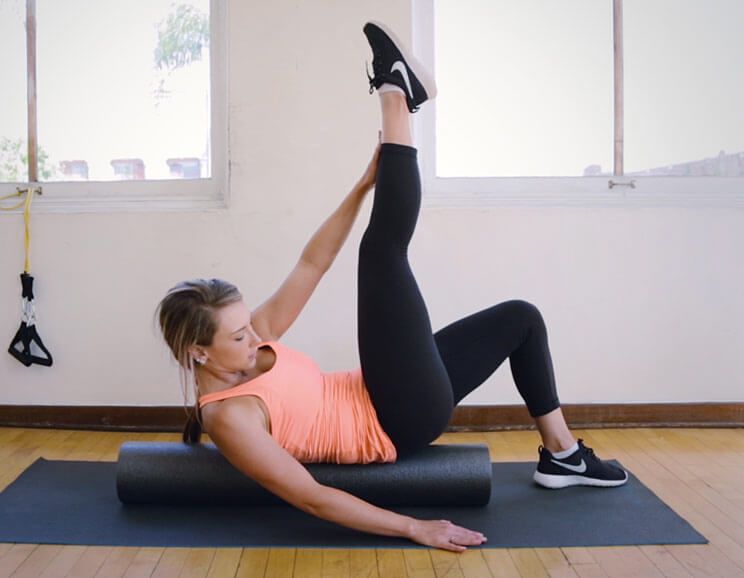
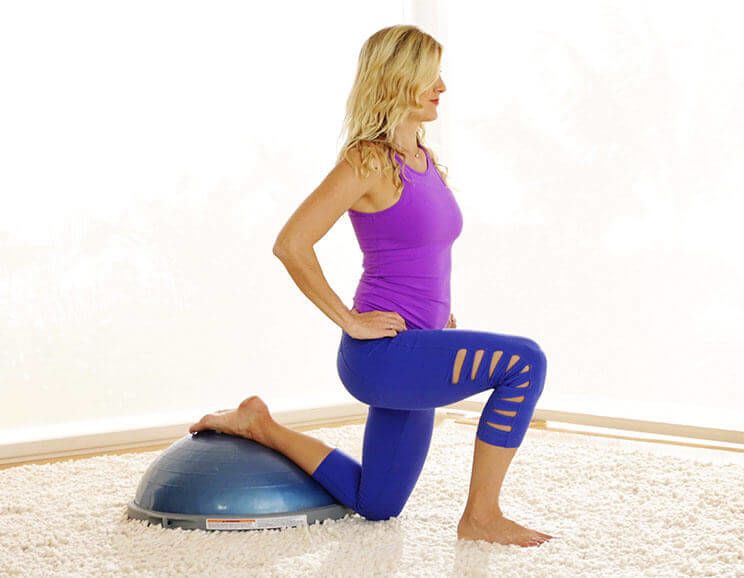
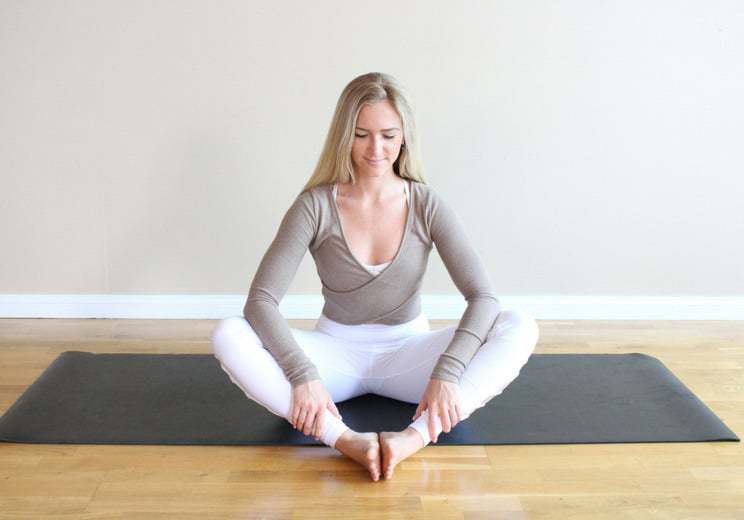

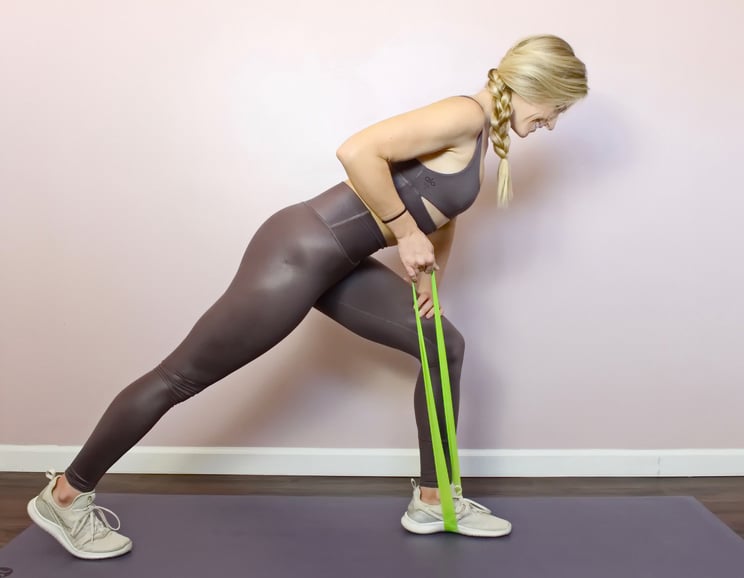
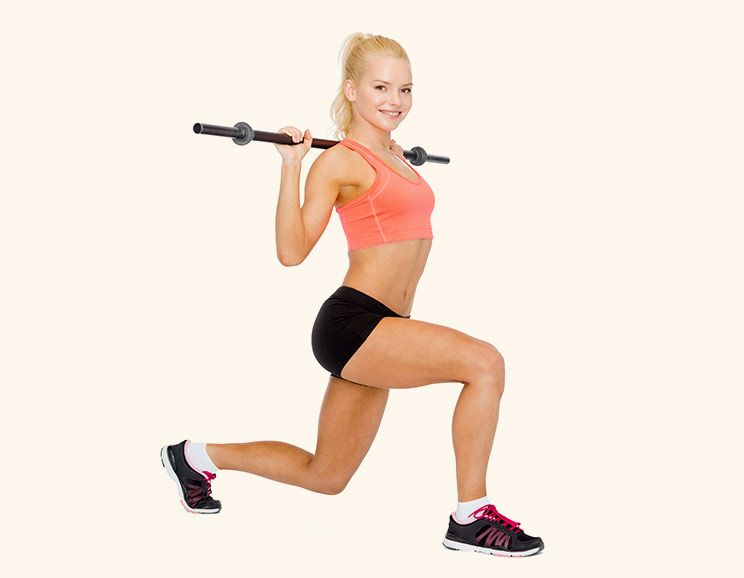
Show Comments